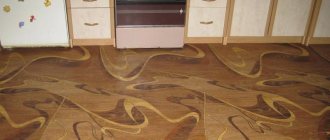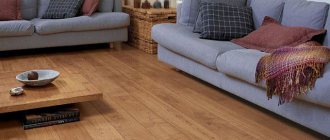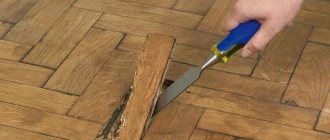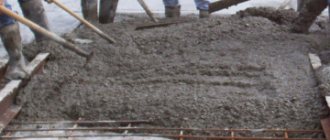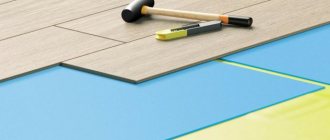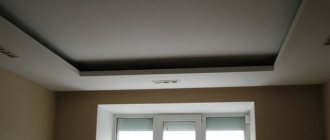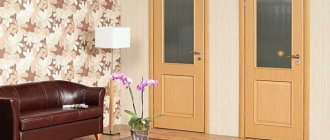Is it worth gluing
There are three ways to lay flooring:
- gluing to compounds offered in stores;
- flooring with the canvas secured with skirting boards;
- fastening with construction double-sided tape.
It is recommended to fix linoleum with glue if the room size is more than 20 square meters. Long-term guarantees are issued for glued materials. Felt material is also offered in a wide range.
It is necessary to glue the canvas if the room has large furniture that moves frequently. This will eliminate the risk of deformation of the floor covering. Thanks to gluing, the wear of the material can be minimized, so it will last longer. Even non-professionals can do this.
During the off-season, linoleum can stretch or shrink as it is affected by sudden changes in temperature and high levels of humidity. You can avoid such troubles if you attach the linoleum with glue.
It is necessary to apply glue at the joints of the panels, covering every centimeter. These areas need a strong connection, otherwise they will begin to lag.
Linoleum laying technology
Before we talk about how to lay linoleum correctly, a few words about one more important point - preparing the material for installation
- The roll is first brought into the room and left at room temperature for several days in an upright position. Thus, its thermal expansion will not affect further performance. The humidity level there should not be very high - no more than 65%.
- The roll is carefully spread on the leveled floor. The canvas should lie smooth and even, there should be no folds on its surface. The material is allowed to “rest” for about a day.
- Concrete has good thermal conductivity, so the best solution would be to use materials with a felt or jute backing. If you choose a single-layer type, you will need insulation.
The easiest installation method is to lay the decor on a cement base with a backing. Laying linoleum with a backing promotes additional thermal insulation.
There are several types of soft bases that are designed for use on concrete surfaces. They are conventionally divided according to materials of manufacture - natural and artificial. In the first case, manufacturers offer a substrate based on jute, flax or felt. Artificial ones include polyethylene, penofol or isol. They have worse characteristics than natural materials. However, their main advantage is their affordable cost. Quite often, cork or polyethylene foam is used for these purposes, which also contribute to sound insulation.
The choice is determined by the average temperature and humidity in the room. The use of an additional coating is relevant in the absence of a similar layer in the decor, high heat losses, and a high probability of exposure to moisture.
Attention
Is it correct to put plywood or chipboards on a concrete floor? Using them to level a concrete base when laying a vapor-tight coating is unacceptable, since they are capable of absorbing moisture. Over time, the sheets will begin to deform and ultimately ruin the appearance of the coating.
Installation methods
This material is soft and flexible. To properly glue linoleum, you need to focus on what kind of floor in the room. If you don’t know what to glue linoleum to, then read the important information.
To achieve effective results, the basis must be:
- Durable: individual pieces of concrete or peeling wood floorboards must be excluded;
- Dry: if the base is wet, it is impossible to carry out the work efficiently;
- Smooth: differences and unevenness will be visible on the finished floor surface;
- Clean: if there is debris under the linoleum, the appearance of the floor will suffer.
PVC products can be laid on various substrates if they meet the basic requirements. To glue linoleum efficiently, the room temperature must exceed 18 degrees, and the air humidity level must be up to 70%, but no more.
If you are carrying out renovation work in winter, then let the rolls lie in the room for several days so that they adapt to the conditions.
Laying linoleum on a concrete floor
Concrete floor. As already mentioned, you need to knock down the bumps and fill the potholes with repair concrete, remove dust and prime them. A large slope of the plane from the horizon is not an obstacle, the main thing is that it is smooth and the slope is uniform.
What if the floor is badly damaged? It makes sense to make a self-leveling floor. If the base falls apart at all, you will have to pour a new screed.
If concrete floors have a lot of potholes and small cracks, SV flooring will help again. However, if this is a budget option and you need to save money, then there is no point in pouring CB solutions (especially over a large area), since they are very expensive.
It is much easier and faster to putty the base, and after three days it will be possible to lay the coating. In this case, we do this: we buy the simplest floor leveler (not SV, but a regular one. We dilute it in a bucket for solutions, pour it onto the base and begin to disperse it with a large façade spatula, I don’t have any photos, but it’s all intuitive).
When the entire old floor is puttied in this way (and in the process you will also remove what is falling off), then we wait 3 days and only then we can lay the linoleum with our own hands.
Before this, you need to go over the entire area with the same spatula and use it to remove all the small stones and drops of mortar, sweep the floor, and then prime it. Due to the thin layer of leveler, which shrinks a lot, there will most likely be sand on the surface - don't let that bother you. It’s just that sand, as a lighter fraction, rises upward in the leveling layer.
Since such a layer cannot be rubbed off like a regular screed, the sand remains. The method is suitable for insulated linoleum, which is usually laid in schools and kindergartens.
Also, a rough concrete floor can be leveled with hardboard by simply laying its sheets end-to-end on a primed base, but keep in mind that over time (especially in public spaces) the joints of the hardboard will certainly be imprinted on the coating.
How to glue correctly: step-by-step instructions
So, when you're ready to start laying linoleum, follow these simple tips.
Preparing the base floor
If you are gluing the material to concrete, then preparing the base involves checking for unevenness. If they are, then you need to eliminate them using a cement mixture or putty. In the case of wooden flooring, it is necessary to strengthen creaking boards and eliminate differences in the plane. You need to get rid of traces of old paint and varnish coatings, because they will not allow the canvas to adhere well to the surface. This way you can install the material correctly.
Linoleum fitting
To adjust the material to the size of the room, special knives are used. You can also use a stationery knife, but the work process is slightly more complicated. Bend the linoleum slightly along the wall and leave a mark on its reverse side. The calculation must be carried out so that there is a gap of 3 mm between the wall surface and the material. Leave the same marks every 20 cm. Using a ruler, connect these marks and cut a neat, even strip.
Gluing
You can glue the coating with glue or double-sided tape if we are talking about an area of more than 20 square meters. Most often, a variety of adhesive compositions are used. It is necessary to carefully lubricate the floor surface with the selected glue using a spatula. After this, the canvas is pressed against it and carefully smoothed. You need to go over every square centimeter to get rid of the air under the coating, because otherwise it will not be securely fixed.
How to glue the edge
The appearance of the surface will deteriorate if the edges and seams are poorly glued. To glue the edges, you should use bustylate. Such a composition that gets on the material cannot spoil the coating, because it is transparent.
Apply bustilate to the floor, bending the edge of the linoleum. Press the edge butt together and smooth it out to get rid of any air. Place a weight on top to secure the material. After the bustilate has dried, attach the threshold strip or install the baseboard.
You can fix the joints if you use adhesive compounds that cause chemical reactions. Cold welding can be used to seal seams. One tube allows you to treat a considerable amount of territory. This sealant is very beneficial. If there is a substrate, it will be additionally insulated.
This technology is simple and understandable. Painting tape is attached to the joint and cut along the seam. After this, the glue is squeezed out along the joint and wait until it hardens. Then the strip is removed along with the remaining product.
Material selection
New linoleum must have a backing, since laying linoleum on old linoleum is only allowed in this way
When choosing a material, you should first pay attention to the thickness of the backing, and only then to the top layer. Is it possible to lay linoleum on linoleum if the new material does not have a backing? Linoleum without a backing can only be used if the old layer is practically intact and the surface is perfectly flat.
Is it possible to lay linoleum on linoleum if the new material does not have a backing? Linoleum without a backing can only be used if the old layer is practically intact and the surface is perfectly flat.
Linoleum differs not only in the different thickness of the substrate, it can be homogeneous or heterogeneous. The first type is a single-layer material used in rooms with high floor loads. Heterogeneous linoleum has 2-6 thin layers.
This coating is also divided into the following types:
- domestic;
- semi-commercial;
- commercial.

